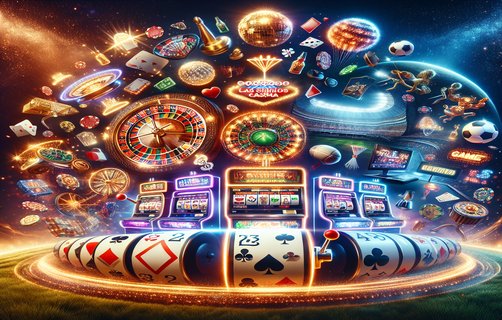Exploring Pai Gow Poker: A Designer's Strategic Insight
**Interviewer:** Thank you for joining us today. We’re here to discuss the popular casino game Pai Gow Poker, and we’d like to explore it through the lens of a designer’s thinking. What makes this game stand out in the browser-based gaming world?
**Designer:** Thank you for having me! Pai Gow Poker is unique because it combines elements of traditional poker with the strategic aspects of Asian Pai Gow. Its integration into the browser-based gaming landscape allows players to engage with it from virtually anywhere, broadening its accessibility. The design ultimately enhances user experience through intuitive interfaces and clear visual representations of hands, which are essential for understanding the game mechanics.
**Interviewer:** Speaking of mechanics, how does **fair gaming** come into play in Pai Gow? In what ways do designers ensure fairness in both digital and live dealer formats?
**Designer:** Fair gaming is a cornerstone of any well-designed casino game. In Pai Gow, it’s crucial that the shuffling and dealing of cards be random and unbiased. For browser-based and live dealer formats, technology plays an important role. In digital games, Random Number Generators (RNGs) are employed, and the outcomes are frequently audited by regulatory bodies to ensure integrity. In live dealer formats, multiple cameras track the dealing process to maintain transparency, allowing players to verify fair play. Designers must also ensure that players feel confident in the game’s fairness, as this influences their overall enjoyment and engagement.
**Interviewer:** It’s intriguing how fairness intertwines with user experience! Now, can you elaborate on the **casino hold ’em strategy** and how it relates to Pai Gow Poker?
**Designer:** Absolutely! Casino hold ’em is a variant that encourages players to form the best five-card hand. Conversely, in Pai Gow, players split their seven-card hand into two hands—one of five cards and one of two. However, the strategic depth transcends the games themselves. Both require a good understanding of hand rankings and making optimal decisions based on the cards at hand. A well-designed user interface can assist players in visualizing their options and understanding the best strategies to adopt, which can be showcased through tutorials or interactive help features.
**Interviewer:** That leads us to the topic of **floating strategies** commonly used in casino gaming. Can you provide insights into how players might employ this when playing Pai Gow?

**Designer:** Floating strategies can be both a fun and effective way to approach Pai Gow. This is where players will bet on weak hands, like a low pair or high card, with the intention of possibly taking down a pot. Designing games that allow room for different play styles, thus catering to both aggressive and conservative players, enriches the gaming experience. Clear visual cues and statistics on previous rounds could further enhance a player’s ability to determine if a floating strategy is viable in their current game context.
**Interviewer:** Interesting! Transitioning to **live dealer strategies**, what are some major takeaways for players looking to hone their skills?
**Designer:** Live dealer strategies require a mix of traditional gaming knowledge and the adaptability to a real-time environment. Players must be aware of how other participants interact while leveraging their own skills. Furthermore, designing the interface to allow players to monitor timelines and outcomes enhances their strategy formulation. Options for chat and assistance from live dealers are often crucial in creating a dynamic environment that encourages skill development.
**Interviewer:** Let's touch on the aspect of **calling ranges**. Could you clarify how designers present such strategies within the game?

**Designer:** Calling ranges are vital in any poker game, including Pai Gow. Effective designers will ensure that players can easily track their opponents’ potential hands through visual aids and statistics. Through effective design, these ranges can be illustrated right on the game screen, helping players make informed decisions. Insights into risk management based on the observed patterns promotes strategic depth that can sustain players’ interest over time.
**Interviewer:** Finally, many are intrigued by **max bet slots** in conjunction with card games like Pai Gow. How do these elements coexist?
**Designer:** Max bet slots offer high-risk, high-reward scenarios that appeal to thrill-seekers. Integrating such elements into the Pai Gow experience could attract more diverse players. For example, offering a “jackpot bonus” for players reaching certain thresholds on their hands can introduce an added excitement factor. Ensuring that these features are clearly highlighted within the game interface enhances player engagement and keeps the gaming experience fresh.
**Interviewer:** Thank you for sharing such valuable insights! It’s clear that the design of Pai Gow Poker encapsulates many layers of strategy and user interaction.
**Designer:** It was my pleasure! Understanding the intricacies of design in games like Pai Gow Poker not only enhances player experience but also sustains the life of the game within the ever-evolving casino landscape.
